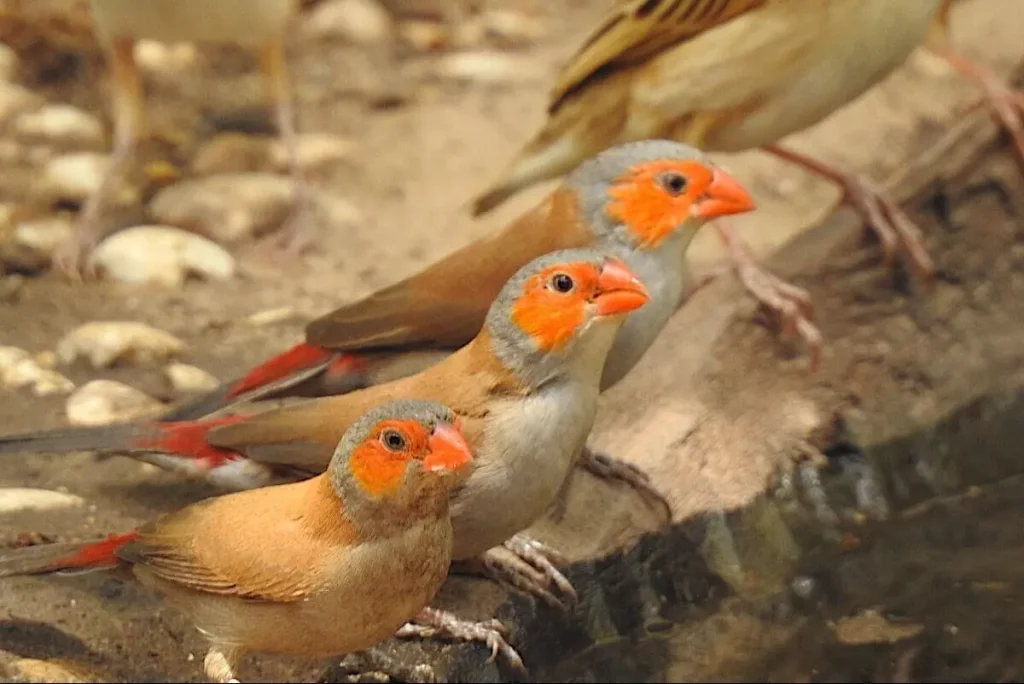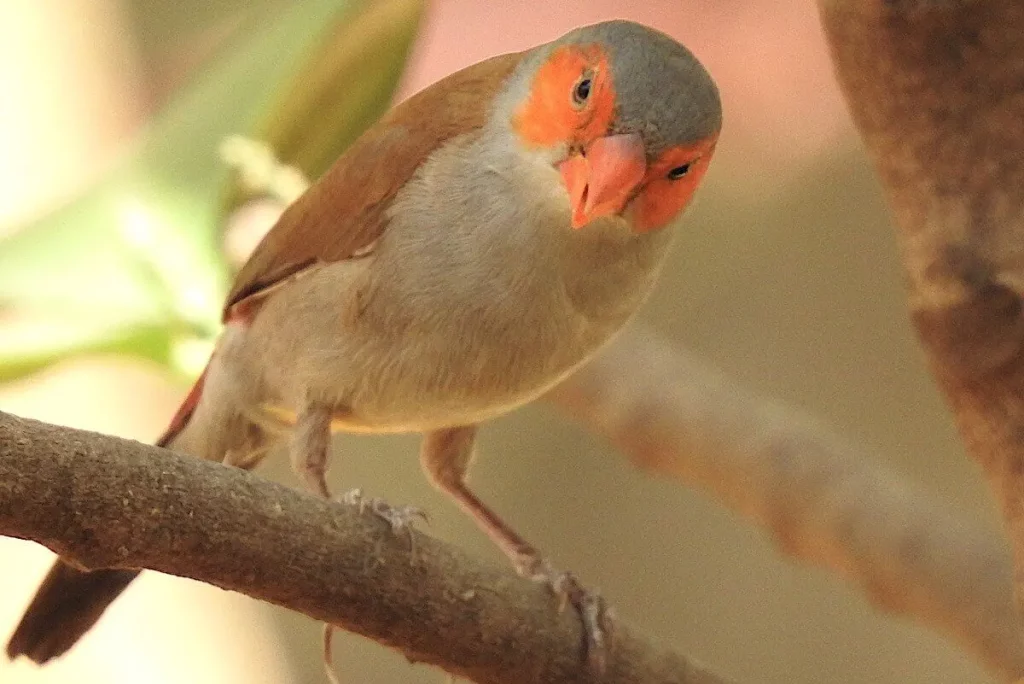Orange-cheeked Waxbill, as the name suggests has beautiful orange cheeks and belongs to the finch family. The orange cheeks look almost as if they have been painted on. This delightful little bird is a daily visitor to Footsteps. It can be seen at our eco-pool mixing with Firefinch, Red-cheeked Cordon-bleu and Lavender Waxbills alike.


Where is the Orange-cheeked Waxbill found?
As mentioned earlier, this little bird is a daily visitor at Footsteps.
Originating in Western Africa, they are found in open grassland with light tree and/or shrub coverage, also along watercourses, in gardens and cultivated fields. They are also commonly found in dry savannah habitats. It also has a recent range expansion into western parts of Uganda. It also can be found at subtropical/ tropical (lowland) wet shrubland habitats. Source Wikipedia
In Gambia for example this delightful bird is widespread and also generally fairly common in forest interiors.
What does it look like?
The Orange-cheeked Waxbill is approximately 12 cm in length. The sexes are alike with a brown back, red rump, orange face, and red bill. However, the male bird usually has more pronounced orange patches on the abdomen.
What does it feed on?
They feed mainly on seeds, during the breeding season they may also dine on termites, aphids, and gnats.
Want to know an interesting Factoid?
In captivity, they bond with their human captors and recognise their owner’s faces and voices responding with cheerful peeps.
How does it sound?
You know when they are around because go their high-pitched Peeps and their call can be described as a series of whistles like Chi-De-Chi.
